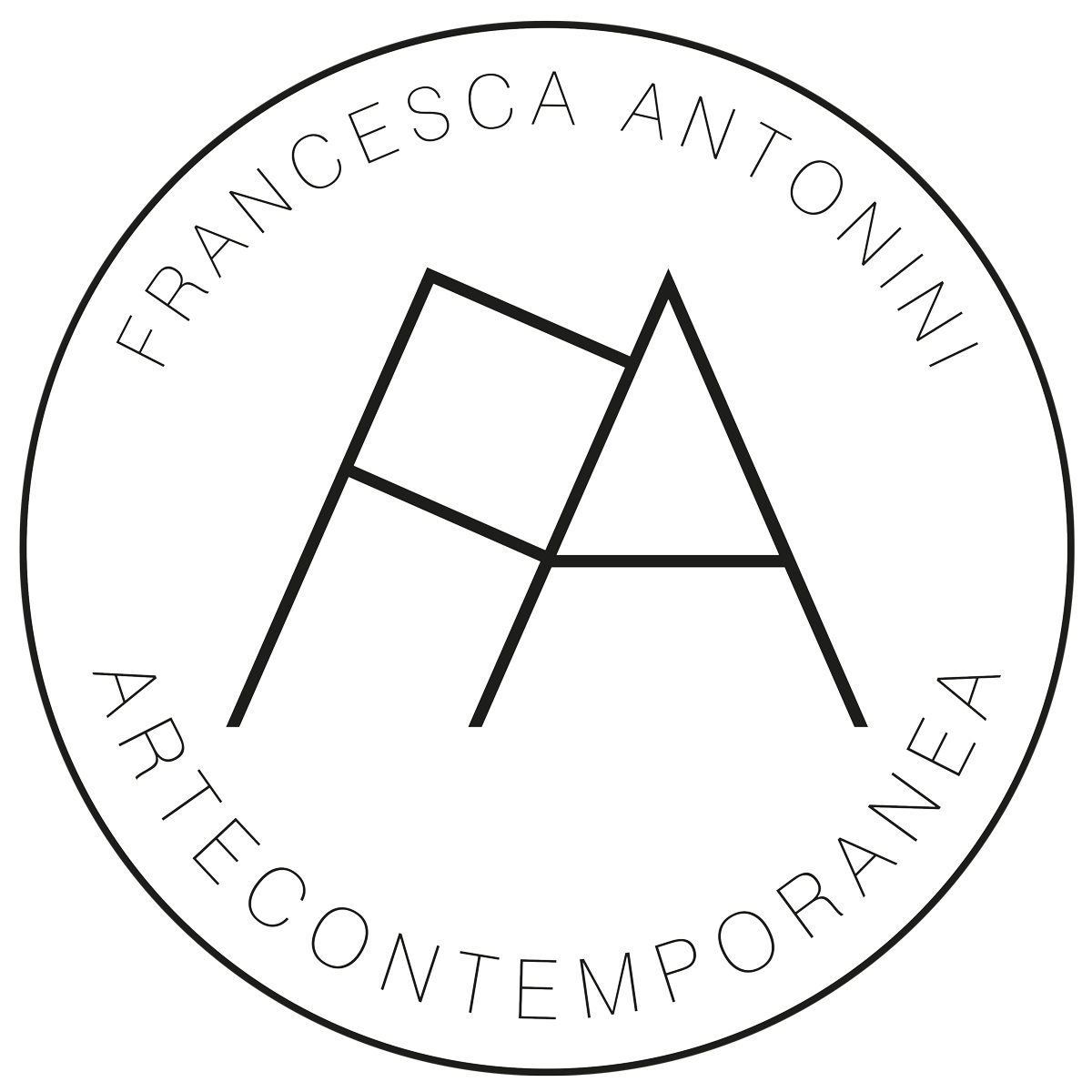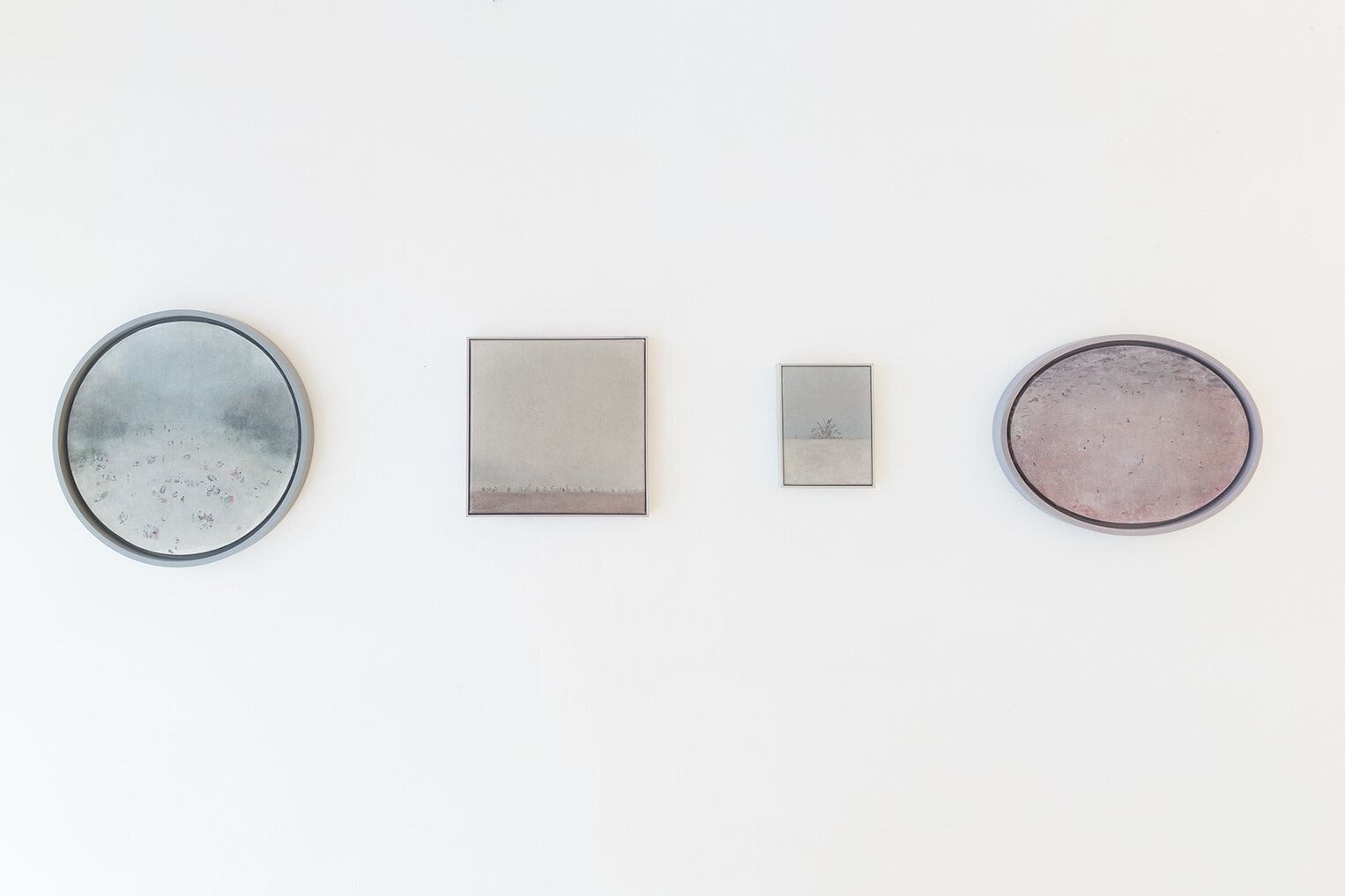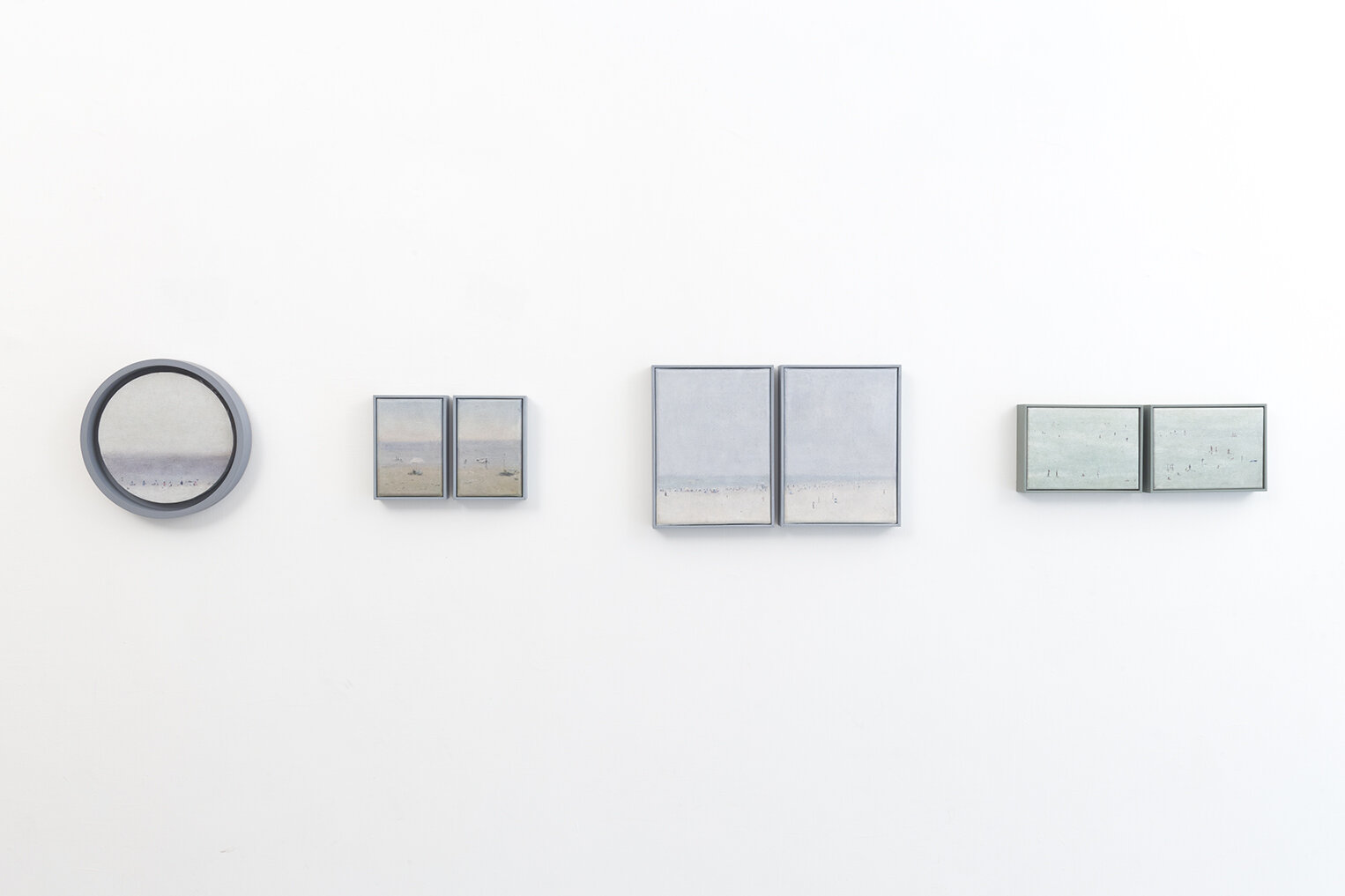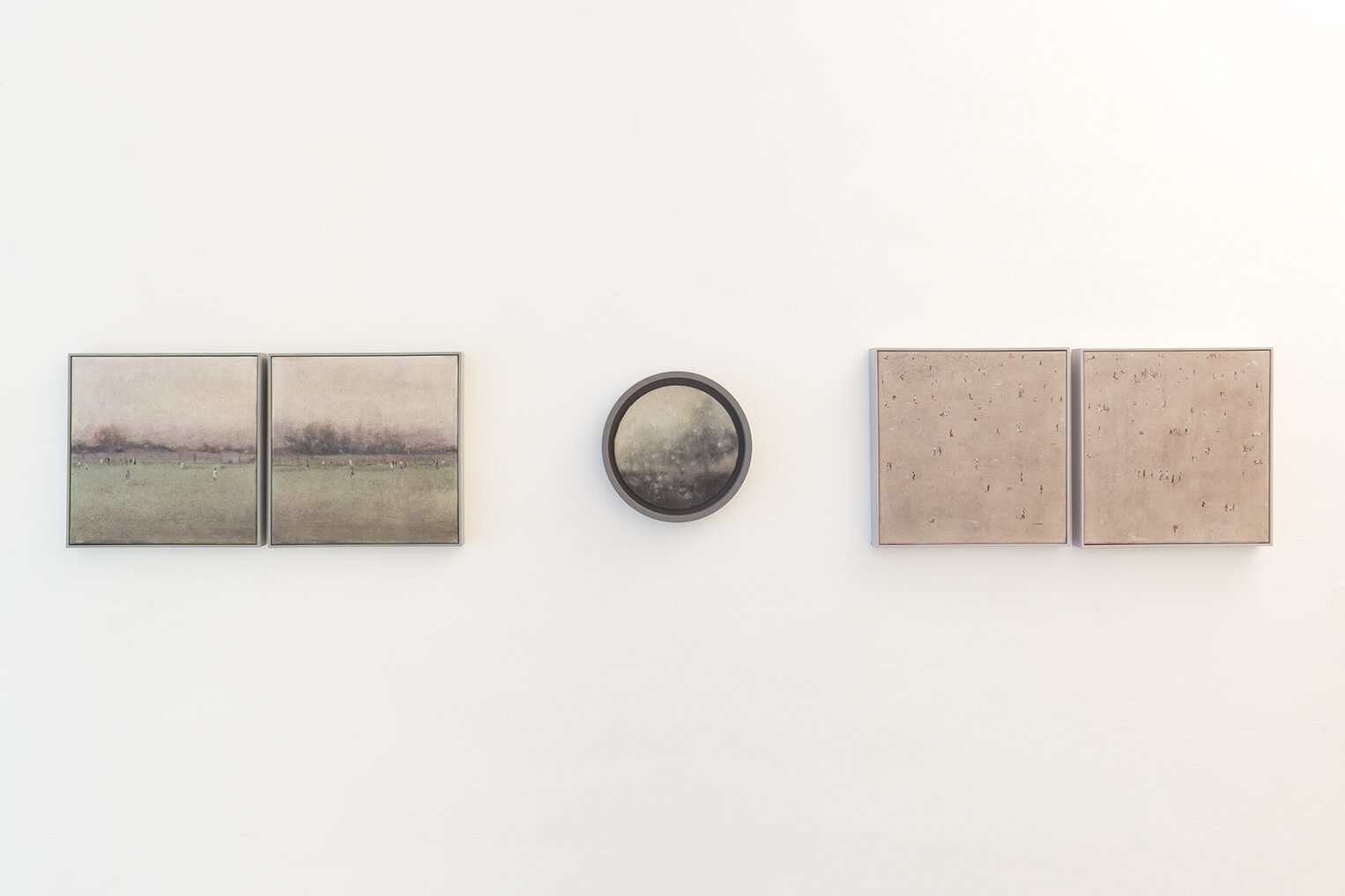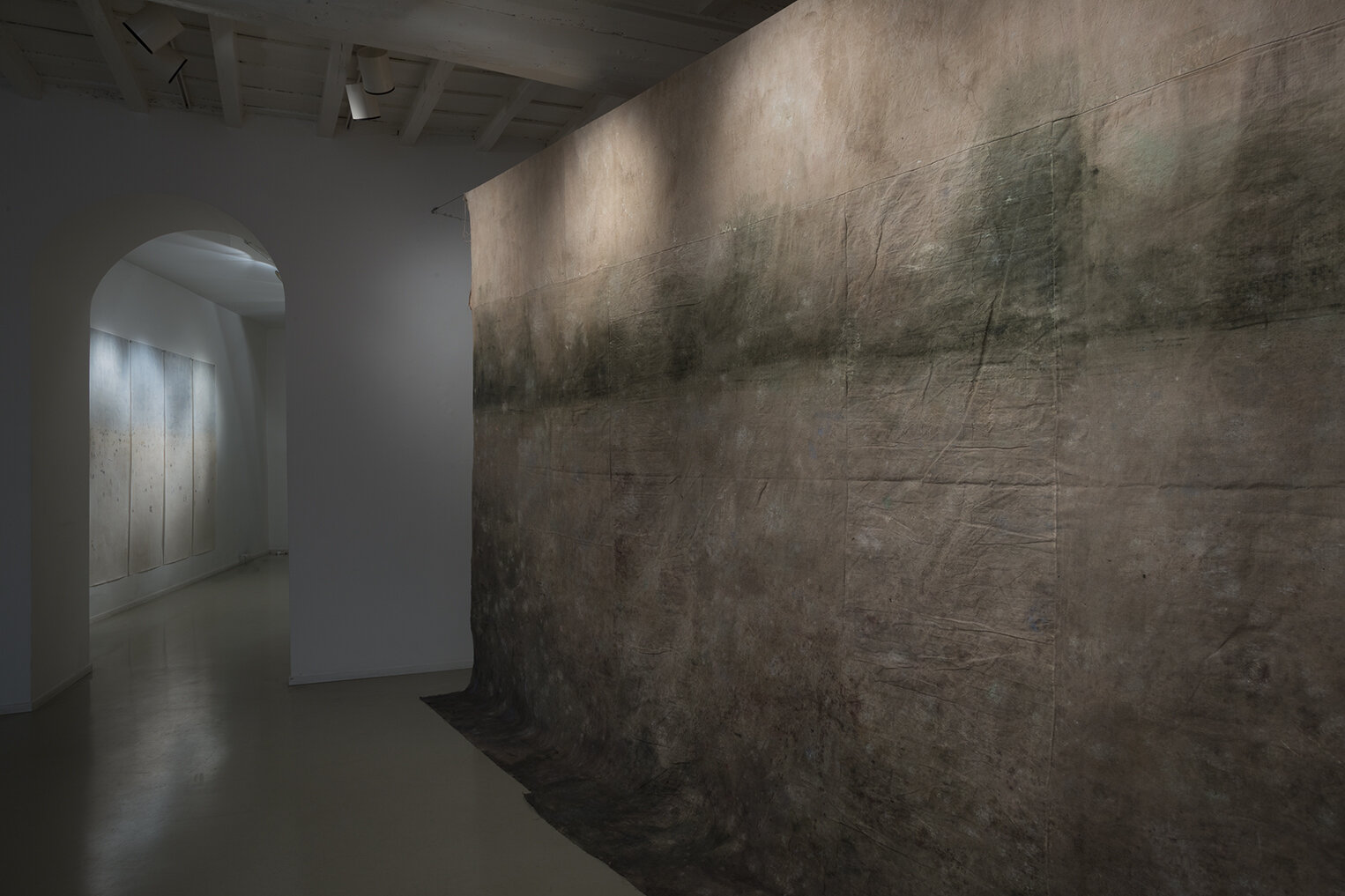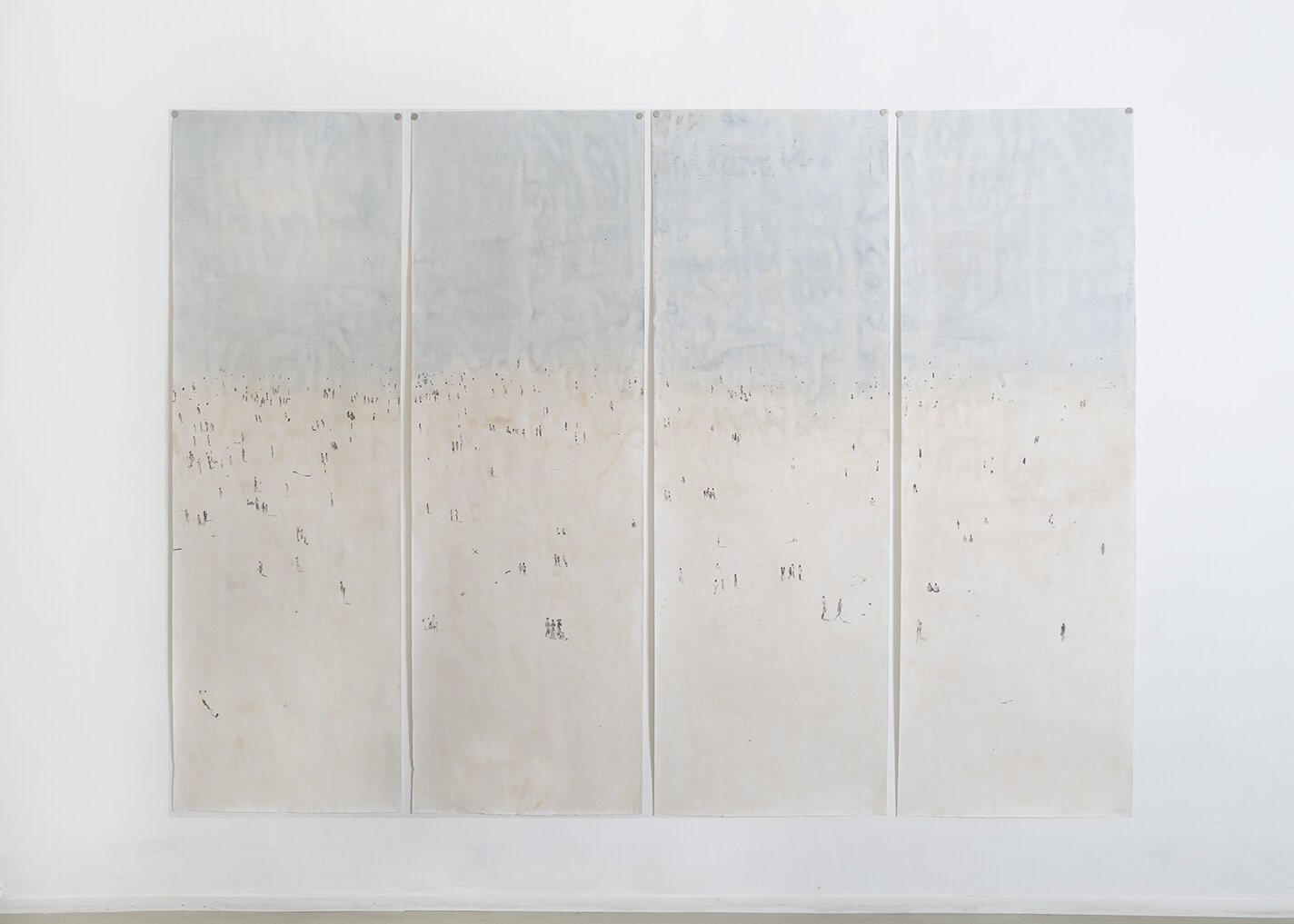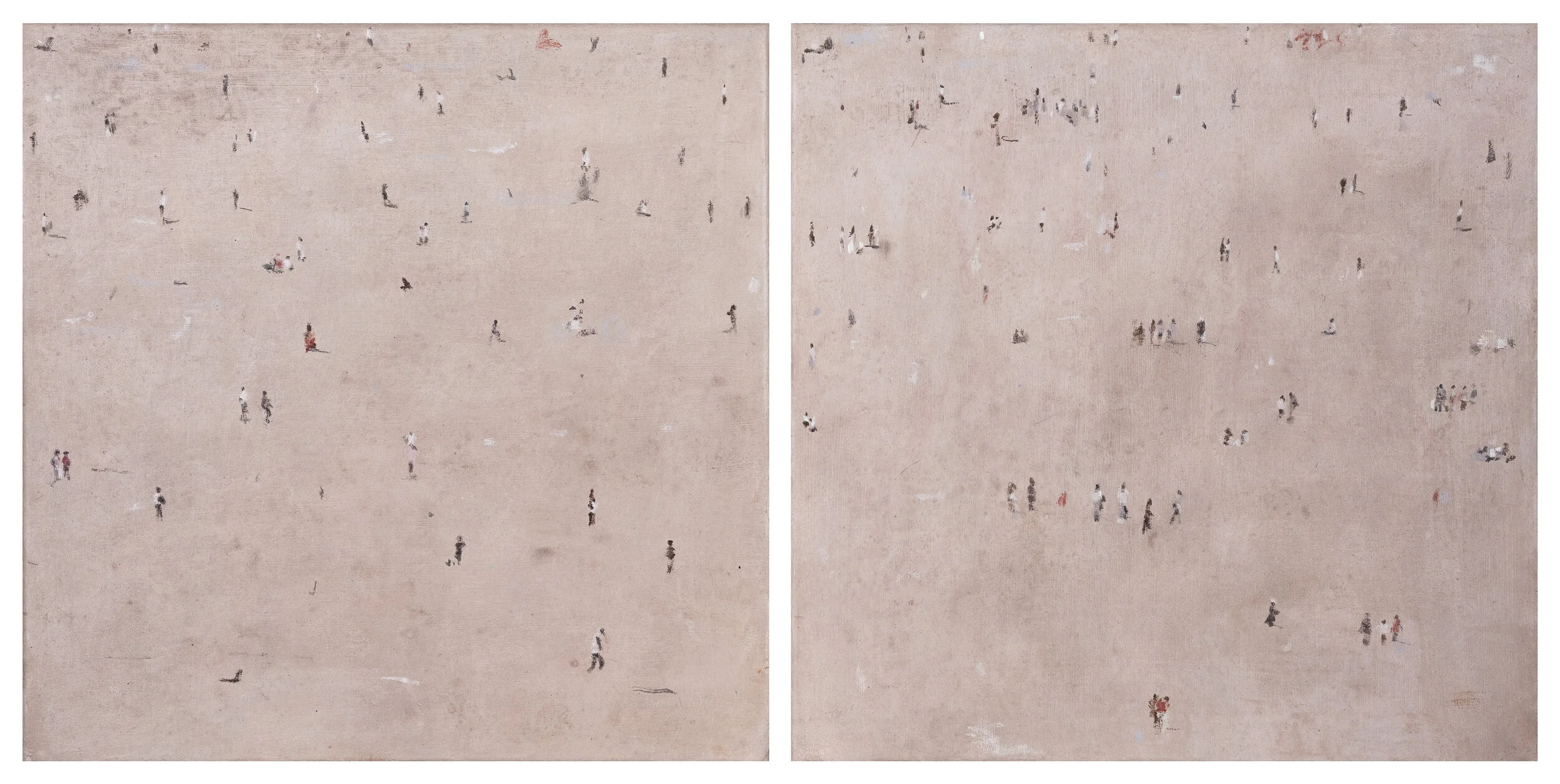CONCERTO PER CARILLON
ENRICO TEALDI
OPENING Thursday november 15th 2018
until february 9th 2019
Concerto per Carillon
Francesca Antonini Arte Contemporanea is pleased to present the second solo show at the gallery of Enrico Tealdi (Cuneo, 1976).
On this occasion, the artist conceived a project specifically designed for the exhibition space, in which his light and intimate papers are combined with large-format works and an environmental installation. A series of new works, devoted to landscape, which becomes vision, memory and dreamy atmosphere.
The title of the exhibition, Concert for carillon, introduces the essence of the project: a game of resonances and scale turns, in which the concentration of the small landscapes is counterbalanced by the large canvas suspended in the central room – of theatrical inspiration – a backdrop that amplifies the scope of the artist's vision and invites the viewer to experiment a new physical relation with the work. The research of Tealdi gets more magniloquent, maintaining, in the shift of format and proportions, its expressive concentration and evocative power.
The love for drawing, that has been for Tealdi a fundamental trigger since childhood, has developed into a taste for painting, treating landscape and human figure alike, as well as keeping the control on the overall view and the accuracy of details. The color mixture is managed with technical ability and a great sensitivity for the whole, and characters are coagulated in tiny juxtaposed touches, that can portray human figures and their relations, while the process of construction of forms is purely chromatic.
Tealdi’s poetics feeds on the small events of everyday life, but recalls, for instance, the great tradition of Venetian vedutism, not aiming at the clarity of perception, but at the interpretation of reality in a subjective and evocative key, and creating evanescent and unreal images thanks to the flaking of shapes and the skillful dosage of shadows. The light is therefore a unifying element of the composition and the atmosphere, in a sort of contemporary luminism of divisionist inspiration, while the reiteration of themes confirms a meticulous and passionate approach to art making.
For the artist, in fact, "Beauty, meant as art, is the best of answers. I have drawn for love, desperation, anger and loneliness. I have drawn to see afar. It has been like dressing in white and walking in the mud to go further.”
